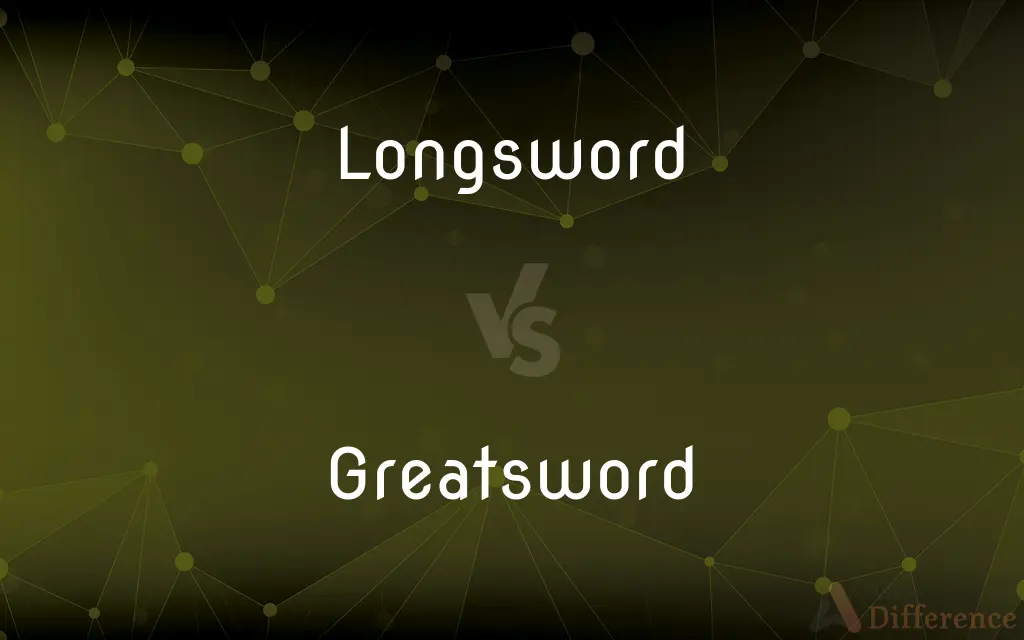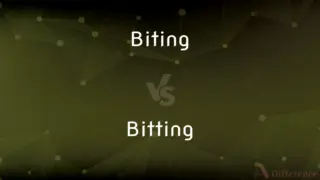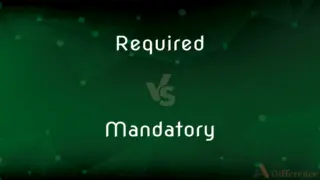Longsword vs. Greatsword — What's the Difference?
Edited by Tayyaba Rehman — By Fiza Rafique — Updated on September 26, 2023
Longsword is a European sword designed for two-handed use with a cruciform hilt and double-edged blade. Greatsword is a very large two-handed sword, typically broader and longer than a longsword.

Difference Between Longsword and Greatsword
Table of Contents
ADVERTISEMENT
Key Differences
The Longsword and Greatsword are both historic European weapons, but they differ significantly in design and use. The Longsword, balanced for both slashing and thrusting, has a cruciform hilt and a double-edged blade.
Greatswords, as the name implies, are substantially larger than Longswords. While a Longsword is versatile and can be wielded with one hand in some styles, a Greatsword demands two hands due to its size and weight.
The era and region of popularity also differ for the Longsword and Greatsword. While Longswords were prominent in the late medieval and Renaissance periods, Greatswords gained fame during the Renaissance and were seen as symbols of strength.
Comparison Chart
Size
Medium-sized, typically around 35-45 inches
Very large, often exceeding 50 inches
Weight
Lighter, allowing for quicker movements
Heavier, requiring substantial strength
ADVERTISEMENT
Usage
Both slashing and thrusting
Primarily slashing due to its size
Popularity Period
Late medieval to Renaissance
Renaissance
Handling
Can be wielded one-handed or two-handed
Almost exclusively two-handed
Compare with Definitions
Longsword
A sword with a cruciform hilt and a straight blade.
The museum displayed a beautifully crafted Longsword from the 15th century.
Greatsword
Primarily a slashing weapon due to its significant size.
With a single swing of his Greatsword, the warrior felled multiple foes.
Longsword
A European weapon popular during the medieval and Renaissance periods.
The Longsword was an essential part of a knight's armament.
Greatsword
Often seen as a symbol of immense strength and power.
In tales, the giant would always wield a Greatsword.
Longsword
A versatile weapon effective in both slashing and thrusting.
The warrior's proficiency with the Longsword was unmatched.
Greatsword
A weapon with a wide blade and extended grip for two-handed use.
The blacksmith spent weeks crafting the perfect Greatsword.
Longsword
A symbol of knighthood and martial skill in many cultures.
The squire dreamt of the day he'd earn his Longsword.
Greatsword
A broad and long weapon popular during the Renaissance.
The Greatsword was often used to break through enemy formations.
Longsword
A sword designed for two-handed use with a double-edged blade.
The knight practiced daily with his Longsword.
Greatsword
A very large sword requiring two hands due to its size and weight.
The hero's Greatsword was legendary for its power.
Longsword
A longsword (also spelled as long sword or long-sword) is a type of European sword characterized as having a cruciform hilt with a grip for two-handed use (around 16 to 28 cm or 6 to 11 in), a straight double-edged blade of around 85 to 110 cm (33 to 43 in), and weighing approximately 1 to 1.5 kg (2 lb 3 oz to 3 lb 5 oz).The "longsword" type exists in a morphological continuum with the medieval knightly sword and the Renaissance-era Zweihänder. It was prevalent during the late medieval and Renaissance periods (approximately 1350 to 1550), with early and late use reaching into the 12th and 17th centuries.
Greatsword
Any generally straight-bladed double-edged sword large enough to require the use of two hands to wield it effectively.
Longsword
A sword with a long blade, especially one designed to be used with two hands.
Longsword
Usually with capital initial. (An epithet of) William, third earl of Salisbury (1167–1226), the illegitimate son of King Henry II of England and Ida de Tosny, and his son, also named William (1209–50).
Longsword
Any type of sword that is comparatively long; depending on context, applied to swords of the Bronze Age, Migration period, Viking Age and Renaissance era.
Longsword
A European sword with a long, straight double-edged blade, a cruciform hilt, and a grip for two-handed use; prevalent from the 14th to 16th centuries.
Common Curiosities
Can a Longsword be wielded with one hand?
Yes, a Longsword can be wielded either one-handed or two-handed.
How does a Greatsword differ from a Longsword?
A Greatsword is much larger, broader, and longer than a Longsword, requiring two hands for use.
What is a Longsword?
A Longsword is a European sword designed for two-handed use with a double-edged blade.
Which sword is heavier, the Longsword or the Greatsword?
The Greatsword is heavier than the Longsword.
Which sword is typically longer?
The Greatsword is typically longer than the Longsword.
Was the Greatsword a common weapon on the battlefield?
It was used in certain periods and contexts, especially during the Renaissance.
Do both swords have a double-edged blade?
Yes, both Longsword and Greatsword typically have a double-edged blade.
Why might someone choose a Greatsword over a Longsword?
For its power, reach, and ability to combat multiple adversaries.
Is the Greatsword only used for slashing?
Primarily, due to its size, but it can also be used for thrusting.
What is the primary usage of a Longsword?
The Longsword is versatile and effective for both slashing and thrusting.
Which sword would be more effective in close combat?
The Longsword, due to its versatility and lighter weight, might have an edge in close combat.
Are these swords used today for ceremonial purposes?
While not common, both the Longsword and Greatsword can be found in certain ceremonial contexts and reenactments.
Which sword was popular during the medieval period?
The Longsword was popular during the late medieval to Renaissance periods.
Is the Longsword related to the Broadsword?
They are different, but both are European swords; the Broadsword typically has a broader blade and is single-edged.
Are there modern sports or martial arts that use the Greatsword?
Yes, historical European martial arts (HEMA) practitioners sometimes train with Greatswords.
Share Your Discovery

Previous Comparison
Biting vs. Bitting
Next Comparison
Required vs. MandatoryAuthor Spotlight
Written by
Fiza RafiqueFiza Rafique is a skilled content writer at AskDifference.com, where she meticulously refines and enhances written pieces. Drawing from her vast editorial expertise, Fiza ensures clarity, accuracy, and precision in every article. Passionate about language, she continually seeks to elevate the quality of content for readers worldwide.
Edited by
Tayyaba RehmanTayyaba Rehman is a distinguished writer, currently serving as a primary contributor to askdifference.com. As a researcher in semantics and etymology, Tayyaba's passion for the complexity of languages and their distinctions has found a perfect home on the platform. Tayyaba delves into the intricacies of language, distinguishing between commonly confused words and phrases, thereby providing clarity for readers worldwide.














































